theartsdesk in Riga - 43,290 Latvians sing and dance for their country | reviews, news & interviews
theartsdesk in Riga - 43,290 Latvians sing and dance for their country
theartsdesk in Riga - 43,290 Latvians sing and dance for their country
Individual souls conjoined with a passionate belief in peace and music achieve miracles
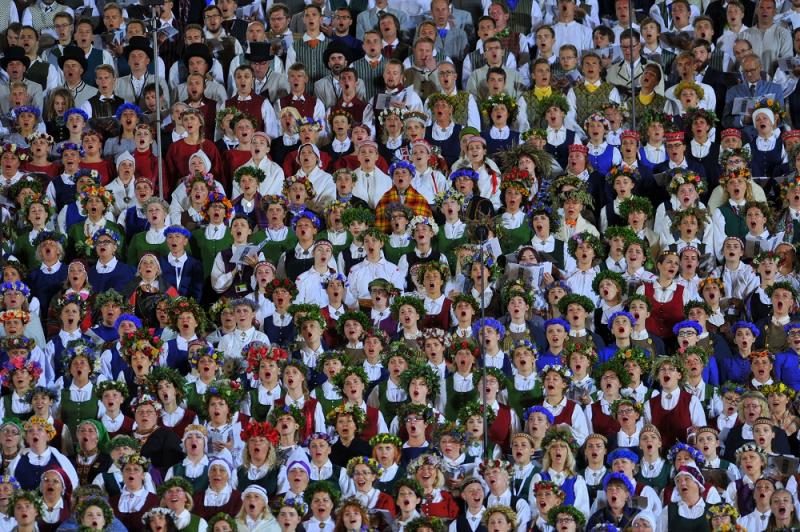
"They incessantly break down, destroy and fragment the mistrust that exists among people," wrote a Latvian journalist of a folklore group during the start of the Baltic countries' "singing revolution" against Soviet rule in 1988.
These thriving countries, models to various extents of the European dream, are all celebrating the 100th anniversary of a disrupted independence (much as Putin would love to grab them back, no doubt hoping for Trump's assistance, and has been trying to enshrine the "illegality" of that independence in Russian law, NATO will not allow it). Their song festivals, on the German model but eventually far surpassing it in scale, go back further in two cases - Estonia's first was in 1869 and Latvia's in 1873; Lithuania, with arguably the oldest folksong tradition of all - Stravinsky drew on it in The Rite of Spring - launched its own version in 1924. 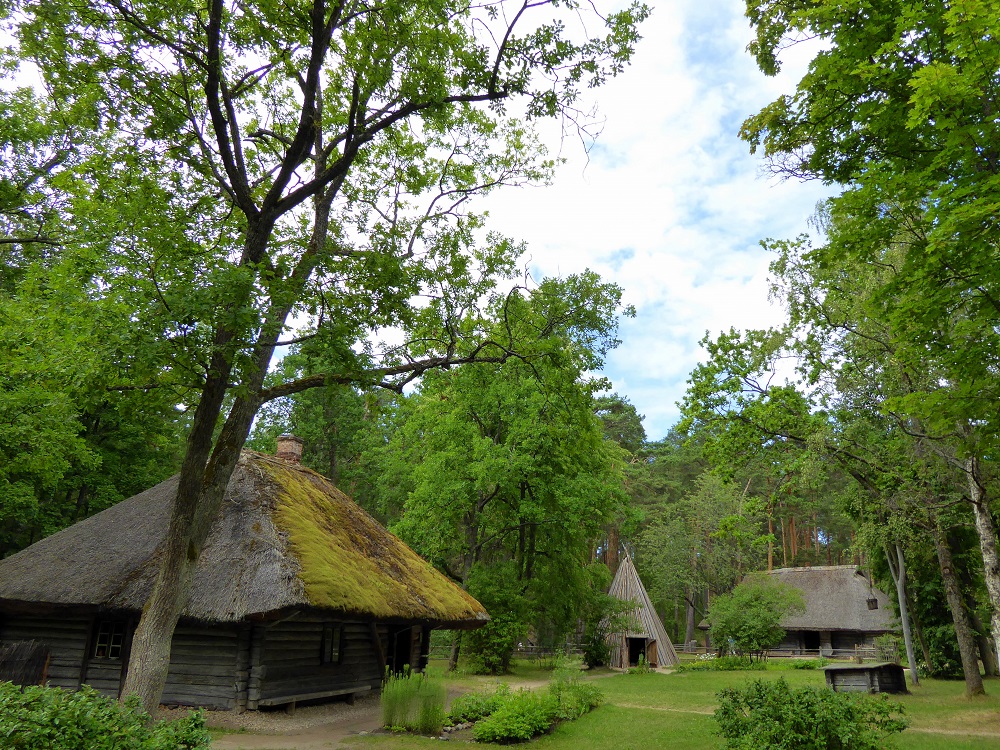
Open-air museums, bringing together old buildings from rural areas, are always fascinating sites to visit, but the Baltic ones have a special significance; the old rituals are not only recreated here, but have a living significance for the people. The place was quiet when I visited, having risen late the morning after the final celebrations, but the vibrancy of the tradition was all over town for the duration of my stay. 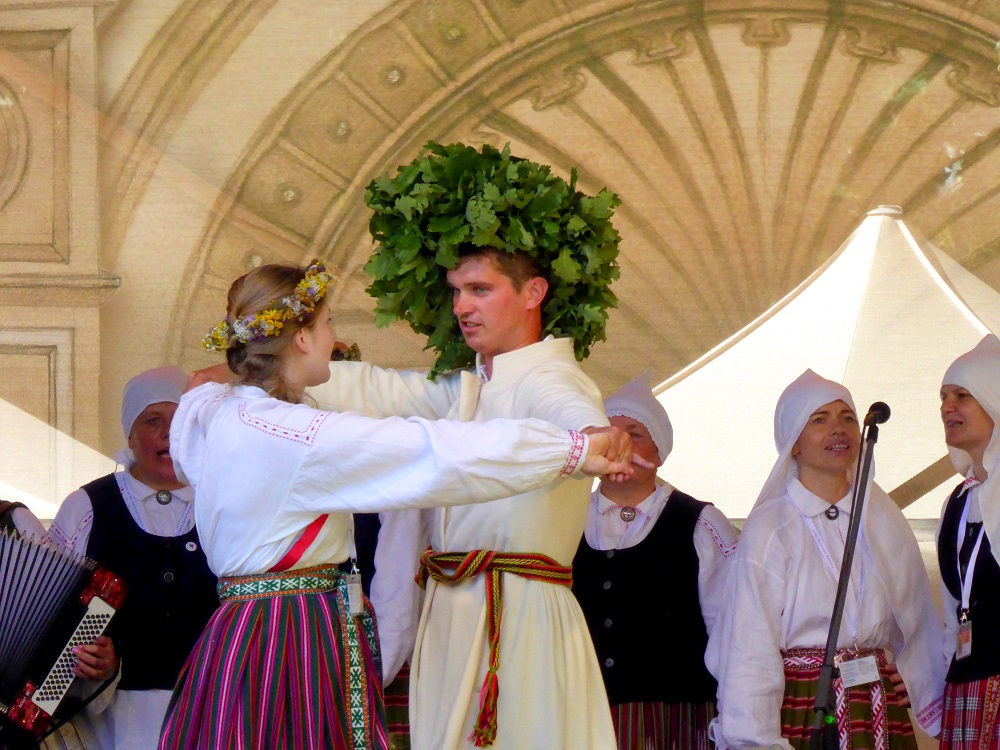
Wood magic has always been a part of the lore; men are compared to oaks, women to linden trees. It can be a bit overwhelming for minorities - a constant theme in the dance festival finale was the production of babies and, of course, an infinite number of heterosexual pairings - but two young friends in Latvia, participating in the song festival for the first time and agreeing on the soubriquet "the linden boys", had been on the Pride march a couple of weeks earlier, totalling a respectable 8,000 and meeting with hardly any opposition (only the odd sorry sign like "Rainbow is not a lesbian"). There's approval from some ministers - one is openly gay - though the support has yet to spread to the government as a whole. 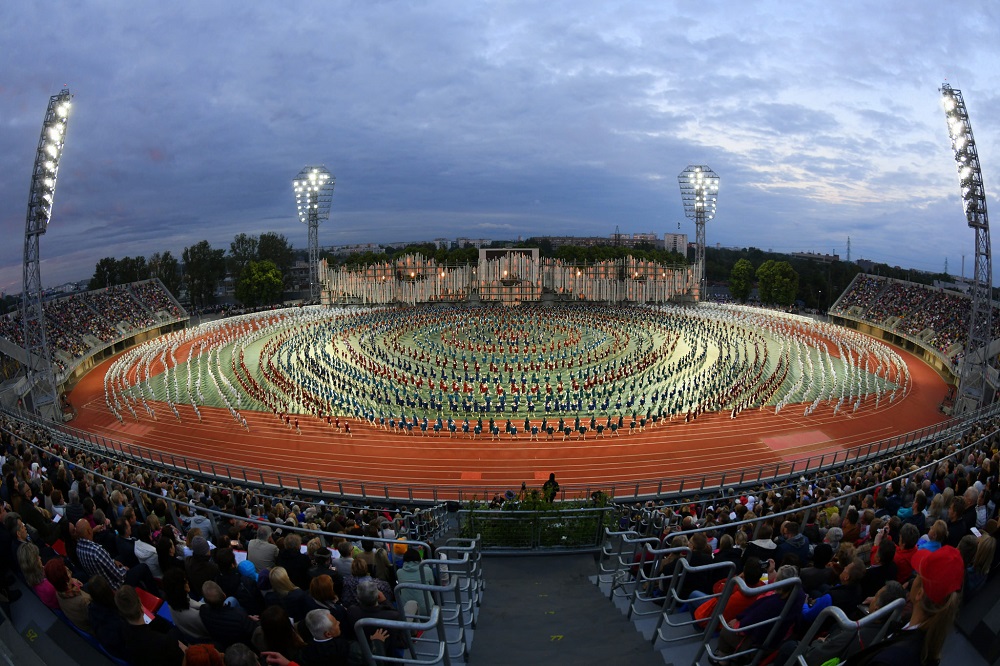 To reach the Daugava Stadium for the Great Dance Concert that evening, you only had to follow the colourfully-dressed crowds. Walking around the grounds before the start was sheer pleasure; last minute rehearsals were being conducted by small groups and racks with costumes were carried to and fro on the staffs (pictured below) which would later play a part in the men's dances (once again, shades of The Rite of Spring).
To reach the Daugava Stadium for the Great Dance Concert that evening, you only had to follow the colourfully-dressed crowds. Walking around the grounds before the start was sheer pleasure; last minute rehearsals were being conducted by small groups and racks with costumes were carried to and fro on the staffs (pictured below) which would later play a part in the men's dances (once again, shades of The Rite of Spring).
Nothing, though, could quite prepare you for the event itself. A relatively late starter in the festival as a whole, joining it in 1948, the dance celebrations inevitably took a leaf out of Soviet mass spectacle and its vast choreographic patterns, but once again you have to bear in mind that this, too, was a statement of national pride, of patriotism rather than nationalism, rooted in the incredibly high dance standards inculcated into Latvians from childhood. 
The best comes last - all 18,000-plus dancers on the pitch, with banners of the individual groups and flags of the participating nations, Brazil, Australia and Canada among them. For an outsider, two and a half hours might seem a little too long, but the unceasing discipline of these amateur performers was stupendous at every point in the evening. 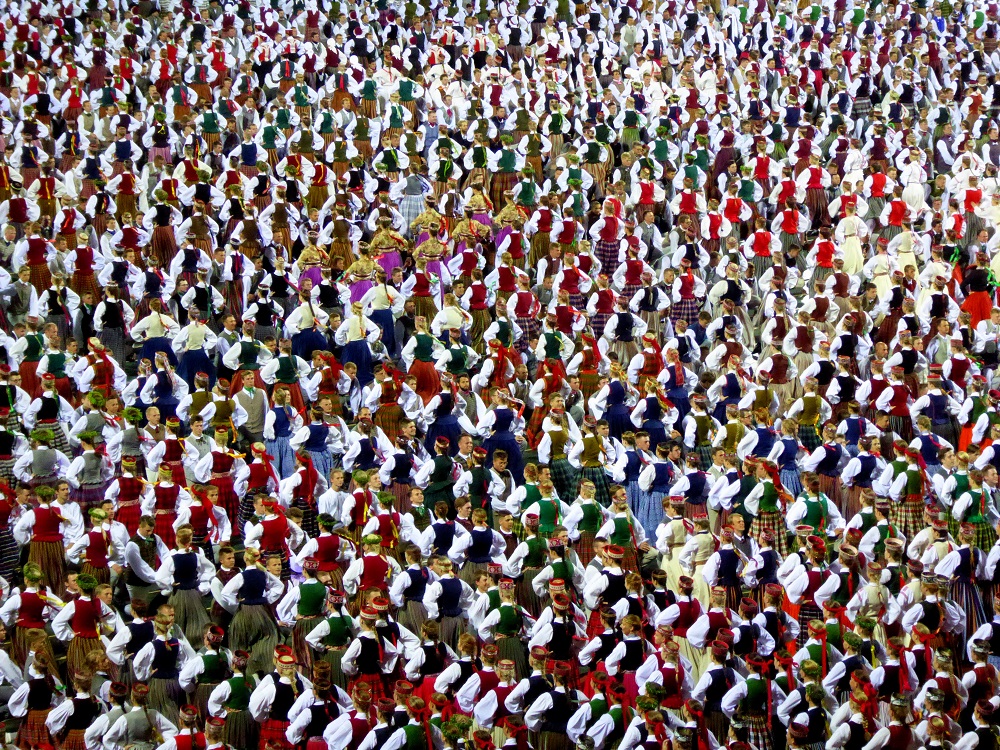
Within the gallery, the large and airy downstairs exhibition space was hosting the first major retrospective of a great Latvian artist, Australian born Imants Tillers. Appropriation is part of his multi-panelled art; the huge canvases include homages to Anselm Kiefer - with whose philosophical ambition Tillers may reasonably be compared - and the New Zealand modernist Colin McCahon. 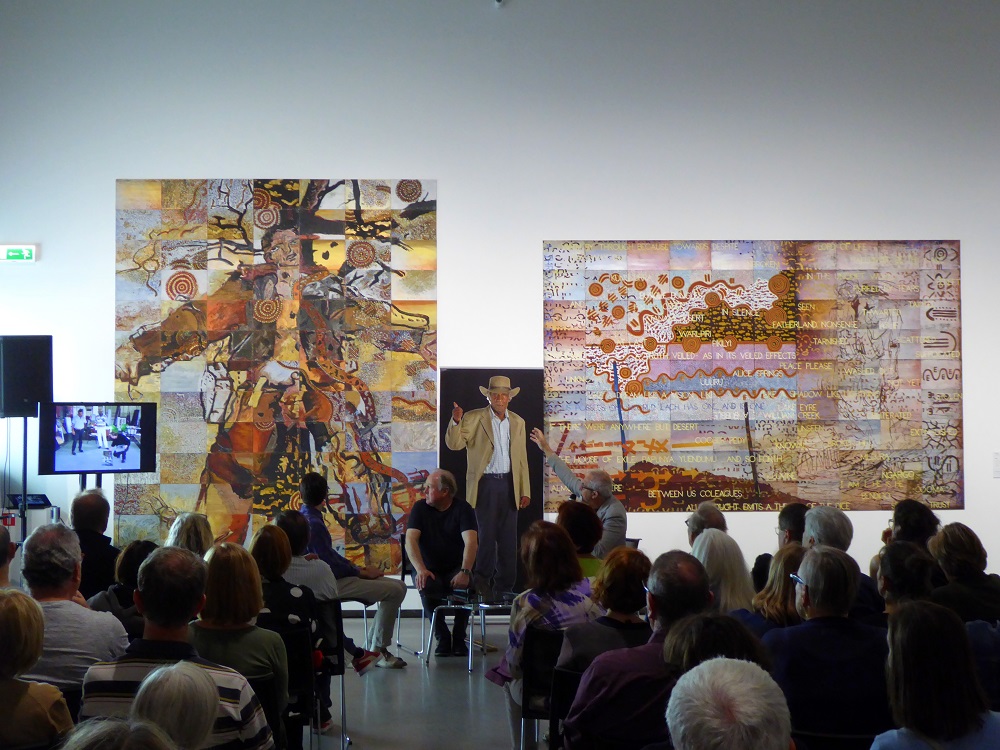
Nature rivalled art in the exquisite surroundings of the Song Finale, the Mežaparks pine forest in a green city suburb. Complementary amphitheatres of stage and 70,000-seater auditorium are flanked by serried ranks of pines. Again, the pre-event bustle is fascinating, and the audience is at liberty to wander “backstage” – there are no boundaries.
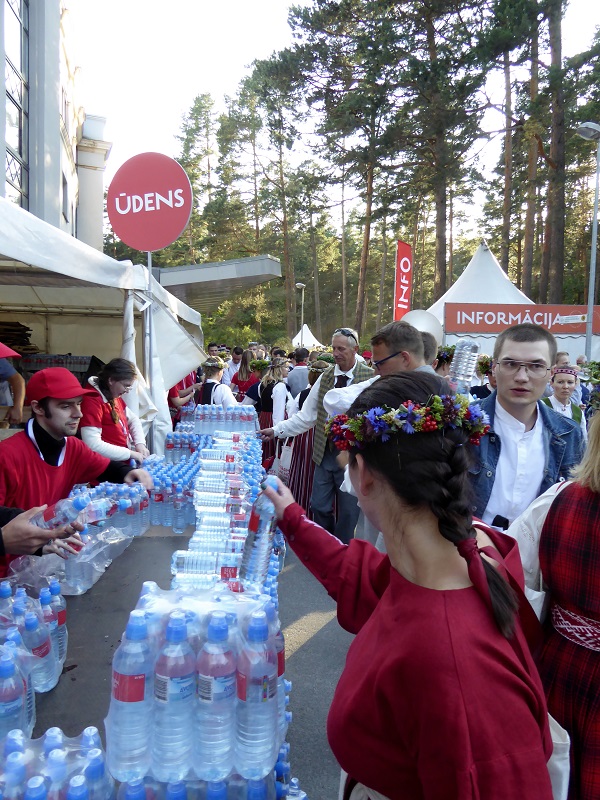
The visual impact, again, is overwhelming; aurally, it’s not quite what one might have expected. Amplification, necessary for the numbers accompanied by folk instruments, simply makes the 16,500 sound like a very fine choir of 100 or so, at least from some distance. Again, an outsider is bound to be baffled by the range, variety and special meaning of the 42 songs in the four-and-a-half hour, no-interval epic, the histories of the veterans among the many choral conductors (an equal number of women here, pleasingly).
The significance of many songs I learned, complete with translation of the texts, from Šmidchens’s book. The a cappella numbers are the richest and most sophisticated, with the men’s choruses "See How the Rose Flowers" and "Sparkling Like a Star" chiming like vespers with the setting of the sun. A midsummer ritual with operatic soloists proved memorable and moving. Classics dating back to the early festivals like "On the Path of the Stars" and "The Broken Pines" formed one climax with a Janáčekian organ solo and a highly original Lord’s Prayer from Lūcija Garūta s cantata God, Your Country Burns. Now there’s a woman composer of the 20th century whose music really deserves to be rehabilitated. 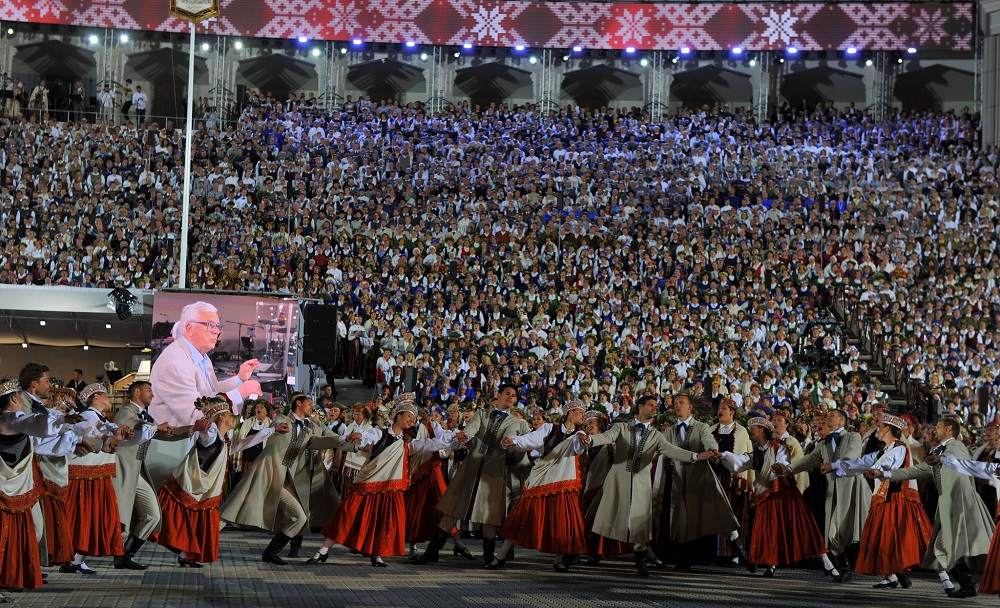 It does seem that something was lost from the 1970s onwards in the anonymous language of international pop. We can’t conceive the impact Raimonds Pauls’s setting of Jānis Peters’ poem "My Homeland" must have had on an oppressed people in 1973, the centenary of the song festival. Nor could we quite share the enthusiasm of the singalong with Pauls himself at the piano (seen on the screen as pictured above - and those are the singers behind the dancers, not the audience), the waving of thousands of illuminated mobile phones.
It does seem that something was lost from the 1970s onwards in the anonymous language of international pop. We can’t conceive the impact Raimonds Pauls’s setting of Jānis Peters’ poem "My Homeland" must have had on an oppressed people in 1973, the centenary of the song festival. Nor could we quite share the enthusiasm of the singalong with Pauls himself at the piano (seen on the screen as pictured above - and those are the singers behind the dancers, not the audience), the waving of thousands of illuminated mobile phones.
Later, when members of the chorus started to jump spontaneously and some of the audience followed suit, you got the sense of how a peaceful mass event could evolve into some sort of nationalistic feeding-frenzy. But it never did, even in those crucial years between 1988 and re-established independence in 1991. Now, more than ever, they have a right to sing and dance on and on – as they did, into the dawn, long after many of us dazed spectators had joined in with the memorable melody of the final classic, "Blow, Wind!" and headed back to town at half past midnight.
Share this article
The future of Arts Journalism
You can stop theartsdesk.com closing!
We urgently need financing to survive. Our fundraising drive has thus far raised £49,000 but we need to reach £100,000 or we will be forced to close. Please contribute here: https://gofund.me/c3f6033d
And if you can forward this information to anyone who might assist, we’d be grateful.

Subscribe to theartsdesk.com
Thank you for continuing to read our work on theartsdesk.com. For unlimited access to every article in its entirety, including our archive of more than 15,000 pieces, we're asking for £5 per month or £40 per year. We feel it's a very good deal, and hope you do too.
To take a subscription now simply click here.
And if you're looking for that extra gift for a friend or family member, why not treat them to a theartsdesk.com gift subscription?

Add comment